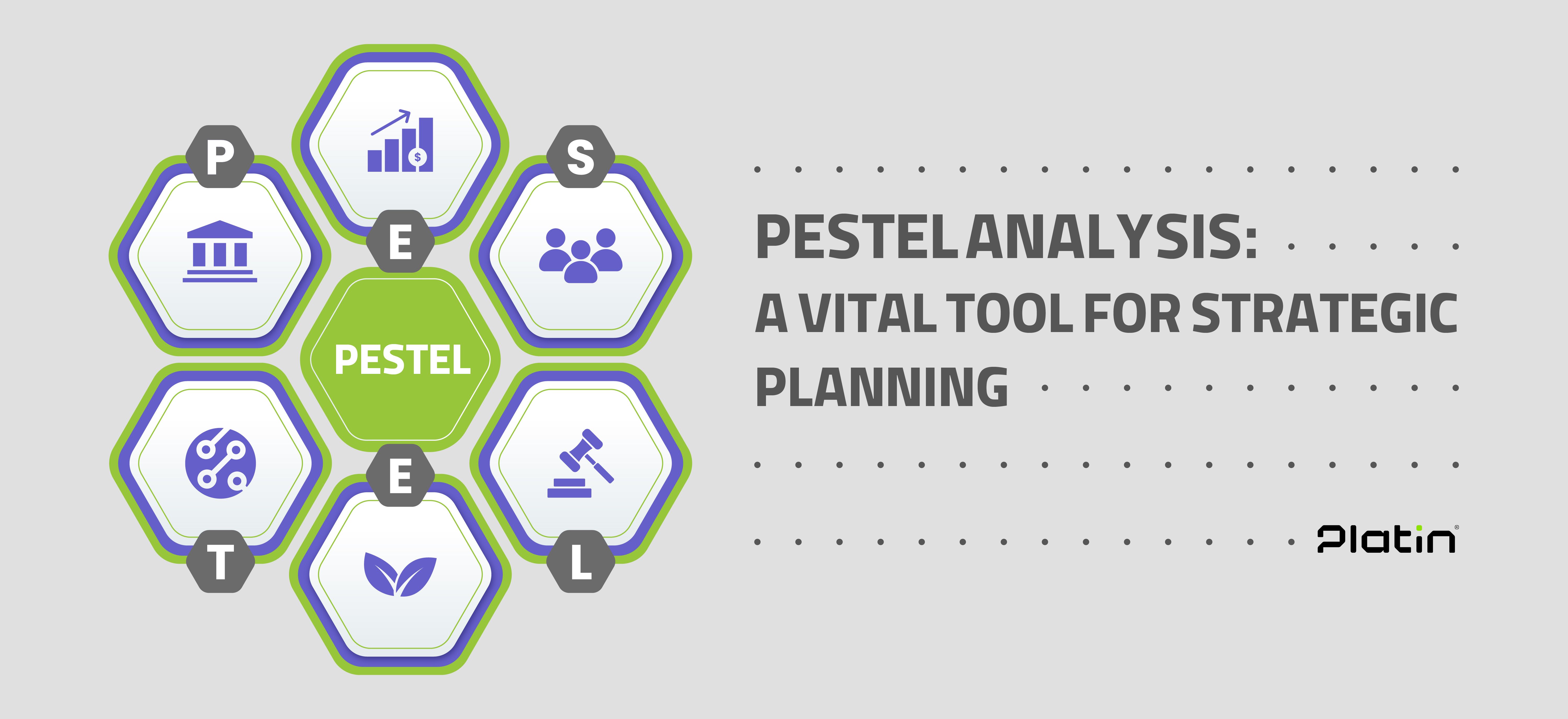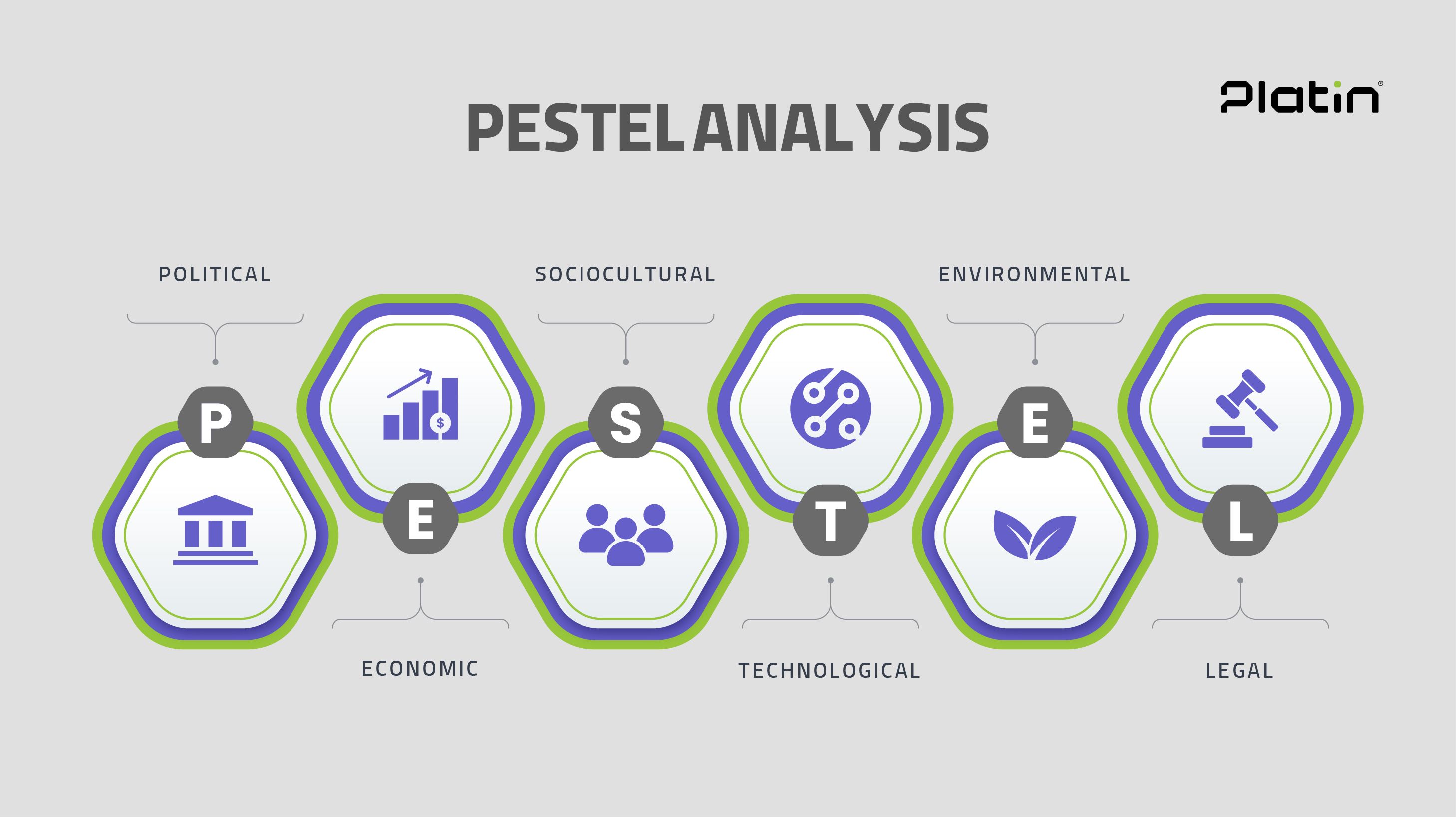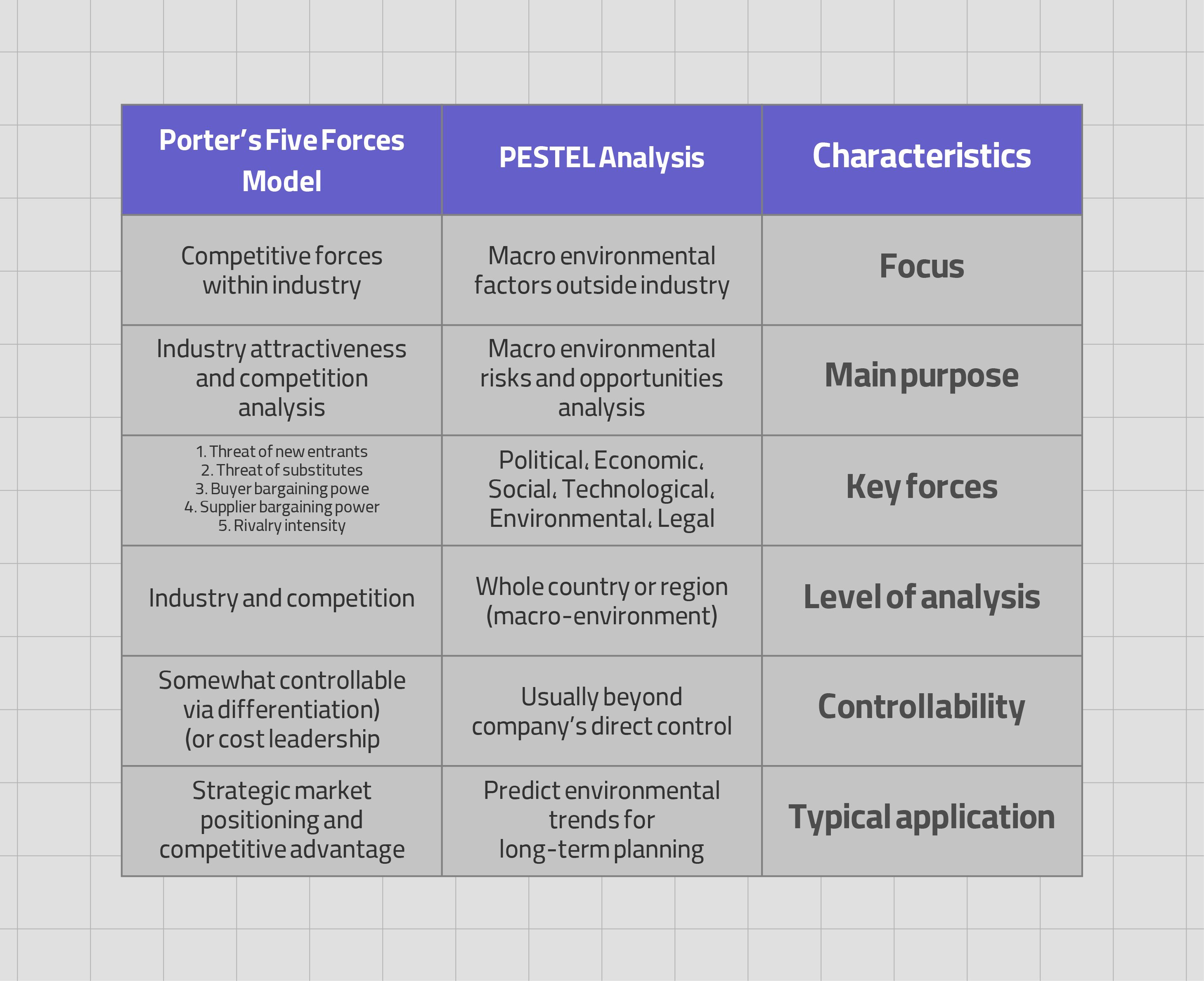PESTEL Analysis: A Vital Tool for Strategic Planning

Introduction
Today, businesses operate under the influence of multiple factors that extend beyond organizational boundaries. These factors are often subject to variables, uncertainties, ambiguities, and fluid concepts. In the current environment, relying solely on internal resources and focusing only on intra-organizational processes and capabilities is no longer sufficient for success, sustainability, and growth. Companies, managers, and professional marketers need a deep understanding of their surrounding environment — an environment composed of political, economic, social, technological, environmental, and legal factors — where changes can directly or indirectly impact strategic decision-making.
Steering a business in today’s rapidly changing world is like driving on an unknown and risky road. If a driver only looks at the car’s dashboard without awareness of external conditions such as traffic, pedestrian movement, road conditions, and weather, problems are inevitable. Similarly, in the new business landscape, if marketing managers focus solely inwardly, external opportunities and threats will be overlooked. In this regard, the PESTEL analysis model has been designed as a well-established and recognized tool in strategic management and marketing to help organizations systematically evaluate macro-environmental factors.
The goal of this article is to provide a comprehensive understanding of this model and explain its applications in marketing processes, organizational decision-making, and strategic planning in general.
Definition and General Application
PESTEL is a macro-analytical tool in strategic management and marketing that assists businesses in systematically examining and analyzing six key external environmental factors. These factors include Political, Economic, Social, Technological, Environmental, and Legal variables. Using this analytical tool, organizations can identify trends, opportunities, and threats in their surrounding environment and make more informed decisions in strategic, marketing, and business development domains.
Introduction to PESTEL Analysis Factors
Political Factors
Political factors reflect how governments, policies, and international relations impact markets. Concepts such as political stability, government support or restrictive policies for specific industries, taxes, import tariffs, export laws, international sanctions, or regional agreements are crucial here. For instance, in import-export domains, tariff setting is a key issue. If governments increase tariffs on specific imported products, the entire business strategy may need reconsideration.
Economic Factors
This section includes overall economic conditions of a country that affect consumer buying behavior, pricing, profitability, and demand. Important factors here include inflation and interest rates, customers’ purchasing power, unemployment rates, economic growth, currency exchange rates, and financial fluctuations. For example, during economic recessions, customers tend to prefer essential and low-cost goods.
Social Factors
This dimension examines culture, lifestyle, attitudes, demographics, and social trends. Factors assessed include age and demographic structure (young, elderly, single, married), education levels, public awareness, lifestyle changes (e.g., inclination toward healthy living or vegetarianism), and cultural values.
For example, if a brand shows a traditional family (father, mother, children) emphasizing traditional family values in its advertising, but the main audience is young singles who prefer independent and modern lifestyles, the advertising message will not align with the audience’s values and lifestyle, thus losing effectiveness.
Technological Factors
Technology is constantly evolving and can transform market structure, production methods, sales, and advertising. With the development of the Internet of Things, artificial intelligence, machine learning, app growth, smartphones, and advanced advertising tools (e.g., augmented reality ads) and customer relationship management (CRM) software, market contexts have changed significantly. Efficient business management in this new space requires learning how to effectively interact with these tools. For example, companies that timely adopted online sales survived during the COVID-19 pandemic.
An important issue in technology and business is technological convergence. According to this theory, when a business plans to upgrade from one technological level to a higher one, it must maintain the functionalities of the previous technology level for emergency conditions and traditional customers. For instance, during national crises and internet restrictions, businesses that preserved telephone interactions managed to partially overcome internet limitations. In countries like the United States, service providers maintain postal and telephone methods alongside newer internet generations to stay connected with traditional customers and prepare for emergency internet outages.
Environmental Factors
Nowadays, environmental preservation is crucial for people and lawmakers. This dimension reviews the impact of the environment and natural resources. Considering water or energy consumption limits, recycling laws, social pressures for resource sustainability, and climate change impacts are essential in guiding businesses in the new world. For example, many brands use sustainable and eco-friendly packaging in marketing to attract customers.
Legal Factors
Laws and regulations directly influence business operations. Important laws include labor laws, insurance, taxes, privacy and data protection regulations, product safety standards, and intellectual property rights. For instance, a person who advertises without complying with online advertising laws may face fines or removal from platforms.

Application of PESTEL in Communications and Marketing Industry
In professional agencies and marketing teams, PESTEL analysis is a key strategic planning tool. Its major applications include identifying market opportunities (e.g., people’s inclination toward health and fitness), preventing environmental threats (e.g., sudden tax increases), designing and adjusting brand messaging according to social and cultural conditions, and selecting communication channels aligned with technological changes.
For example, if a cosmetics brand notices that young women prefer chemical-free products (social factor), it may focus its advertising campaign on “naturalness.”
How to Conduct PESTEL Analysis
A successful PESTEL analysis requires four specific steps, explained here with examples:
Step 1: Define the Objective and Scope of Analysis
Before starting, clarify the purpose of the PESTEL analysis. Is it for a specific product? Entering a new country’s market? Or planning an advertising campaign?
For instance, if a brand intends to introduce a new herbal drink in the Iranian market, a PESTEL analysis focused on the health-oriented beverage industry in Iran should be conducted.
Step 2: Gather Relevant Information
For each of the six PESTEL domains, up-to-date, accurate, and reliable information must be collected. Suggested sources include official government websites (for political and legal factors), central bank economic reports, statistics centers, consumer trends and market research (e.g., Google Trends), and reputable surveys. Also, data on technology, innovation, and reliable climatic and environmental statistics are essential. The key is not to gather hundreds of data points, but to select relevant and impactful information.
Step 3: Classify and Analyze Data
Collected data should be organized in a PESTEL matrix or table. For each factor, answer three questions:
- How might this factor impact the target market?
- Is this factor an opportunity or a threat?
- Is there a possibility for reaction or adaptation?
Step 4: Develop an Action Plan
Finally, translate analysis results into real actions. For example, if the target market is environmentally sensitive, invest in sustainable packaging. Or if export laws have become stricter, prioritize cooperation with domestic companies.
Difference Between PESTEL and Other Analytical Tools
Comparison with SWOT Analysis
SWOT helps understand an organization's internal strengths and weaknesses and external opportunities and threats. Conversely, PESTEL focuses on macro environmental forces usually beyond direct control and assists in long-term planning. Thus, PESTEL corresponds mainly to the opportunities and threats parts of SWOT.
The best approach is to combine both tools: PESTEL analysis typically serves as a precursor to the external analysis in SWOT, extracting opportunities and threats.

Comparison with Porter’s Five Forces Model
Briefly, Porter’s model asks: “Is this industry worth investing in? Who are main competitors? How to build competitive advantage?” PESTEL asks: “Which political, economic, or cultural factors may impact the entire market?”

Advantages and Disadvantages of PESTEL Analysis
Like other analytical tools, PESTEL has specific pros and cons. Important advantages include fostering a macro-perspective, enabling early prediction of environmental changes, and improving accuracy in marketing planning. This broad view helps organizations correctly identify and analyze external factors such as political, economic, social, technological, environmental, and legal changes.
It plays a significant role in early detection of risks and opportunities and facilitates informed decisions and readiness for changes. Moreover, using PESTEL aligns marketing messages better with societal and cultural realities, enhancing effectiveness in target markets.
Disadvantages include the scarcity of reliable data and knowledgeable analysts (leading to superficial or incorrect analysis), confusion caused by overwhelming and unprioritized data, and the fast pace of environmental changes, which may quickly render analyses outdated.
Ultimately, PESTEL is one of the most important tools that every manager, marketer, or business owner should know and use. In today’s world, business success or failure depends not only on internal factors but also on political, economic, social, and environmental conditions. When conducted properly, PESTEL analysis clarifies marketing campaigns’ direction, refines brand messages, and makes decisions more forward-looking. Any business that wants to survive and grow in the market must consider this tool in its decision-making.
Resources: